- Home
- Tom Clancy
Airborne: A Guided Tour of an Airborne Task Force Page 19
Airborne: A Guided Tour of an Airborne Task Force Read online
Page 19
A cutaway of the Lockheed Martin Loral Anti-Tank Missile.
JACK RYAN ENTERPRISES, LTD., BY LAURA ALPHER
FIM-92 Stinger/Avenger Surface-to-Air Missile System
Is it possible for a weapon system to have such great value on the battlefield that it actually turns the political tide of a war? If so, the man-portable Stinger SAM is just such a system. In the 1980s the Reagan Administration made the decision to supply advanced Stinger man-portable surface-to-air missiles to the Mujahadeen rebels fighting the occupying Soviet armies in Afghanistan. Several years later, the Soviets withdrew their forces—defeated. Many in both America and the former Soviet Union firmly believe that if any single factor contributed to this withdrawal, it was the fact that the Russian helicopters and aircraft were unable to fly unhindered and gain control of the air in such a fashion as to provide support for their troops on the ground. Stingers in the hands of the Mujahadeen were the reason.
What type of weapon can have this type of impact? Well, the Stinger missile was designed to replace the Redeye man-portable SAM system which entered service with the U.S. military in 1967. The problem with the Redeye was that it was a “tail-chase” weapon, which meant that the Redeye’s infrared seeker needed a very hot heat source to home in on in order to lock onto its target. This was usually possible only when chasing after the heat plume coming from the rear of a jet’s engine. Unfortunately, soldiers usually only see the rear of an enemy aircraft’s jet after it drops its bombs onto the target. Thus the Redeye could usually engage the aircraft only after it was too late. Another disadvantage of the Redeye system was that it could only attack aircraft that were flying Mach 1. Thus, if an enemy pilot wanted to escape a Redeye, all he needed to do was speed up. A final problem for Redeye was that it was a very easy missile to decoy. Even as the Redeye began to enter service in 1967, the Army and Marine Corps were aware that a somewhat more advanced man-portable SAM was needed. Design, development, and testing of a Redeye replacement took nearly a decade. It was worth the wait, however, and the result was the FIM-92 Stinger missile, which began to enter service in 1979.
The Stinger missile, manufactured by Hughes Missile System Company, is a truly incredible system which has been combat-proven time and time again. The system itself, sometimes referred to as MANPADS Stinger (Man-Portable Air-Defense System), consists of a fiberglass launcher assembly with missile, a grip stock, an argon gas-charged Battery/Coolant Unit (BCU), and an Identification Friend or Foe (IFF) Interrogator. The FIM-92 missile has a two-stage solid-propellant rocket motor with different types of infrared and/or ultraviolet guidance systems fitted for subsequent models of the missile (FIM-92A, 92B, 92C, etc.).
Stinger MANPADS are usually accompanied by a crew chief, a gunner, and some type of vehicle carrying extra Stinger reloads (often an HMMWV). Once a target is sighted, the gunner can interrogate it using the IFF transponder to establish if it is hostile. Seven tenths of a second after the IFF switch is pressed, an audible tone will inform the gunner if the target is friend or foe. Should the target prove hostile, the gunner can activate the system by energizing the BCU with the impulse generator switch. When sufficient UV/IR energy is received to get a lock-on, another audible signal indicates that the missile is ready for launch. The gunner then depresses the firing trigger and less than two seconds later, the ejector motor has ignited and the missile is on its way. Once Stinger has been launched, it is very difficult to decoy. This is especially true of later versions of the missile, which are highly jam- and decoy-resistant. After the entire launch sequence, the MANPADS crew can reload and engage another target almost immediately. The only drawback is that MANPADS cannot fire on the move.
To remedy this problem the Army and Marine Corps began buying the Avenger Pedestal-Mounted Stinger system. Manufactured by Boeing Defense and Space Group, the Avenger is the first successful fire-on-the-move SAM system to enter production. It combines the technology of the Stinger missile with the speed and mobility of the HMMWV chassis. The system has eight missiles fitted in a turret mounted on the Hummer. The system is highly mobile and can be carried into the field by transport aircraft as small as a C-130, as well as CH-46E and CH-47D helicopters. The entire system is somewhat more capable than the Stinger MANPADS system because the vehicle allows more capable targeting equipment to be carried. Examples of this are a low-cost FLIR sensor, an eye-safe laser range finder, and a heads-up optical sight. Another interesting capability of the Avenger is its ability to allow the crew to engage targets from remote positions over 150 feet/45.7 meters away from the fire unit by using a remote-control system. All in all, the Stinger MANPADS and Avenger systems provide an invaluable antiaircraft capability to airborne troops who otherwise would have to rely upon friendly aircraft and long-range SAMs (like the Patriot) to protect them. Those systems may not always be available when the 82nd lands. The Stinger/Avenger system will be.
An Avenger Surface-to-Air Missile (SAM) system. Equipped with eight Stinger Missiles and a .50-calibre machine gun, the Avenger augments the man-portable Stinger MANPAD units in Army Air Defense Units.
JOHN D. GRESHAM
EFOG-M Surface-to-Surface/Air Missile
A word should also be mentioned here about another new missile system known as EFOG-M or Enhanced Fiber Optic Guided Missile. It was originally known as N-LOS (Non-Line-of-Sight). The name was later changed to FOG-M, and then the program was canceled in 1990. It was revived a few years later, and has recently been given the name EFOG-M. The EFOG-M would be capable of attacking both ground and air targets using a fiber-optic data link system, with TV or Imaging Infrared as the main guidance package. The proposed missile would have a range of about 15 km/9.3 mi, and would be carried by a modified HMMWV vehicle. Current plans call for Raytheon Missile Systems, EFOG-M’s prime contractor, to manufacture sixteen fire units and three hundred missiles under the technology demonstrator phase. If the system is successful, it may begin to replace the Avenger and TOW systems sometime in the next century.
Big Guns: Airborne Field Artillery
Artillery has always been a vital part of airborne operations, and its importance is still growing. With the cancellation of the AGS and retirement of the Sheridan light tank, tube artillery is the only large gun system left in airborne service. Airborne artillery units are different from their counterparts in other Army organizations. This is because they too drop out of the sky, and have to help the paratroops fight their way out of the drop zone. This means that they may have to do direct fire missions against enemy targets over open sights. This is almost unheard of in normal artillery units. At the same time, airborne artillery utilizes only the lightest and most portable of gun systems, so that as many tubes as possible can be delivered to the battlefield. These guns are the subjects of our next exploration.
M-119 105mm Howitzer
The M-119 105mm light howitzer is probably the last gun of its caliber that will ever be deployed in the U.S. military. Don’t plan on seeing the M-119 going into retirement, though, because its gunners and the units they support really love this system. Lightweight enough to be towed by a Hummer or slung from a helicopter, it is the most portable artillery system in the world other than mortars.
The development history for the M-119 actually started over thirty years ago in Great Britain. The idea for the M-119 was conceived way back in 1965 when the British Army realized that they would soon need a new 105mm light gun. After nearly a decade of development, the L118 Light Gun, manufactured by Royal Ordnance of the UK, entered service with Britain’s Army in 1974. This event went almost unnoticed in the United States Army, which was busy withdrawing its forces from Vietnam, and dealing with some very serious morale problems. At the time, American artillery officers felt that their current 105mm tube artillery systems, the M-101 and M-102, suited them just fine. This may have been true then, but as the years passed, so too did the U.S. Army’s requirements change.
When the U.S. Army finally decided to go shopping for a new light fiel
d gun, the L118 was their obvious choice for a number of reasons. First, it was extremely light and could be carried easily by a medium-lift helicopter or towed by a truck. Secondly, it was combat-proven in the Falklands War and had performed exceedingly well there. Lastly, and perhaps most importantly, there would be no major development costs that the U.S. Army would have to shell out in order to develop their next-generation gun. If they bought the Royal Ordnance L118 105mm howitzer, they would be buying it “off the shelf” and saving a lot of money in the process. After evaluating the British gun for over a year, the decision to purchase an “Americanized” version of the L118 was finally made in 1986. The new artillery system would, except for the first 150 units, be manufactured under license in the U.S. as the M119 by the Watervliet Arsenal in New York and the Rock Island Arsenal in Illinois.
Since entering service with the U.S. Army, the M-119 has performed superbly. The entire system weighs only two tons, and is capable of firing the entire range of NATO-compatible 105mm shells including high-explosive, smoke, illumination, and HE rocket-assisted projectiles. The entire crew is made up of only seven soldiers, and the maximum range for the M-119 is 14.3 km/8.9 mi using conventional HE ammunition, and 19.5 km/12.1 mi using rocket-assisted projectiles. Because the M-119 is easily transported by a UH-60 Blackhawk helicopter and can be towed by an HMMWV truck, it is a perfect fit to fill the needs of the XVIII Airborne Corps. The 82nd has an entire battalion of these weapons (three batteries of six guns each) assigned to each of the three brigades in the division.
An emplaced M 119 lightweight 105mm Howitzer of the 82nd Airborne Division’s Artillery Brigade. Light enough to be carried as a sling load, eighteen M119s equip each of the Brigade’s three Battalions.
JOHN D. GRESHAM
M-198 155mm Lightweight Howitzer
The heaviest tube artillery now used by the units of the XVIII Airborne Corps is the 155mm M-198. The M-198 field gun replaced the old M-114 in American service. There was much resistance to replacing this design with the newer (and heavier) M-198. However, the weight increases were more than worth it since the M-198 has much greater range than the M-114. The idea for the M-198 began in the late 1960s. Within two years, several prototypes had been delivered, and in 1978 the Rock Island Arsenal began to manufacture the M-198. Over one thousand M-198s are currently in service with the U.S. Army and Marine Corps.
While it is over three times as heavy as the M-119A1 (4,000 1b/1,800 kg versus 15,740 1b/6,961 kg), the M-198 is still helicopter-transportable, and can be carried by either the Army’s CH-47 Chinook or the Marine Ch-53E Super Stallion. The M-198 gun can also be towed by the M939A2 5-ton truck. The crew for the M-198 is composed of nine soldiers. The gun can hurl a rocket-assisted shell over 18.8 mi/30 km, and can toss a conventional projectile some 13.9 mi/22.4 km. The M-198 is capable of firing four rpm, and the lethal burst radius against exposed troops for a regular HE shell is over 150 feet/45.7 meters. In addition to the normal HE rounds, the M-198 can fire:• Antitank Mines—The M-198 can fire both the M741 and the M718 rounds, each of which carry nine antitank mines.
• Laser-Guided Projectiles—The M-198 is also capable of firing the laser-guided Copperhead antitank round (M712) to a range of 16.4 km/10.2 mi. This round is highly accurate and extremely effective, attacking unsuspecting main battle tanks and other types of armored vehicles. Unfortunately, due to their extraordinary cost, only a few thousand were ever produced.
• HE/Antipersonnel/Armor—Several types of HE/antipersonnel/- armor rounds are available: including the M483, which contains eighty-eight dual-purpose grenades; the M692, which contains thirty-six antipersonnel mines; and the M731, which contains a similar number of antiarmor mines. The Dual-Purpose Improved Conventional Munition (DPICM) can also be fired by M-198s.
• Other Rounds—The M-198 can also fire illumination and smoke rounds, and future plans may also enable the M-198 to carry powerful SADARM (Sense And Destroy Armor) munitions, which will give the 155mm the capability to attack heavy armor formations without the need of a forward observer with a laser designator.
An emplaced M198 lightweight 155mm Howitzer of the XVIII Airborne Corps’s Artillery Brigade. A section of six M198s along with contributor radar are permanently attached to the 82nd Airborne Division.
JOHN D. GRESHAM
All in all, while the M-198 is heavy to lug around, it more than gets the job done where it counts: on the battlefield. In actual operations, each of the three brigades in the 82nd would be assigned a six-gun battery of M-198s from the XVIII Field Artillery Brigade.
Future Light Howitzer
The M-198 is heavy, but packs a punch. The M-119 is light, but lacks the power of the larger tube artillery pieces. In the future, the Army plans to deal with this dilemma by having a howitzer that will fit both roles even better than both the M-198 and the M-119. This will be the new Lightweight 155mm Howitzer. The Light Towed Howitzer program arose out of the requirement that rapid-deployment forces had for a light but powerful howitzer. To some degree the procurement of the M-119 dealt with this problem. However, a 155mm gun is still preferred and much more powerful than a 105mm (a 155mm shell has three times the lethality as one from a 105mm tube). How will this new lightweight howitzer be built? Currently it looks like advances in the field of metal alloys, specifically aluminum and titanium alloys, will offer the possibility of significant reductions in the weight of any new howitzer system. The required weight limit for this future howitzer is less than 9,000 lb/4,082 kg, so those companies bidding on this program had a difficult mission to deal with.
There are currently two favored gun designs which are competing against each other in the program. As surprising as it may seem, neither of these gun designs is American. Both originated in the United Kingdom. The first of these is from the Vickers Shipbuilding and Engineering Limited (VSEL) company, which is now a part of the firm GEC™ Maritime. This company has produced the Ultra Lightweight Field Howitzer (UFH) for use by future rapid-deployment forces. The total weight of the UFH is only 8,250 lb/3,745 kg, and the system is able to fire conventional shells to a range of 27,000 yd/24.7 km, and rocket-assisted projectiles out to a maximum of 32,800 yd/30 km. These ranges are very similar to those achieved by the M-198, but the UFH’s weight is more than 5,000 lb/2,267 kg less. The UFH is capable of firing four rounds per minute in short bursts and two rounds per minute of sustained fire. The entire system, along with a seven-man crew, can be carried in a single lift by a UH-60L helicopter, and can also be towed by an HMMWV.
VSEL’s main competition for this program comes from Royal Ordnance, now a part of British Aerospace. Their entry into the competition is called the Light Towed Howitzer (LTH—this gun has also been called the LTH-39). The LTH is more conventional-looking than the VSEL model but is just as capable. Able to hurl 155mm shells ranges similar to those of the UFH, the LTH is just slightly heavier than the VSEL competitor at almost exactly 9,000 lb/4,082 kg. The LTH-39 is also capable of firing four rpm in a maximum-speed burst or two rpm in sustained fire, as well as being transported by the same vehicles and aircraft. While both guns have a different design philosophy, they were both designed with one purpose in mind: to win the U.S. Army/Marine Corps lightweight 155mm gun competition. The winning decision has yet to be made, but both systems have been undergoing rigorous testing, and you can bet that whatever gun the military chooses, it will dramatically add to the punching power of the XVIII Airborne Corps well into the 21st century.
Modernization: Land Warrior XXI
Now you’ve seen what the airborne trooper of today looks like and what types of equipment he may carry. What about ten to fifteen years from now? This question is not an uncommon one. As a matter of fact, the U.S. Army has been asking itself that same question for decades in order to plan ahead and develop new technologies. So exactly what will the airborne troopers of 2010 look like, and what types of equipment will they carry? Let’s take a look at how the U.S. Army has dealt with this question.
A
rmies are inherently conservative, and most of the paratroop’s personal equipment would be familiar to the 82nd Airborne soldiers who jumped into Normandy in June 1944—indeed some of the items are identical. But if the Army’s modernization plans are fulfilled, the next few years may radically transform the “soldier system”: everything the infantryman wears, carries, and consumes in combat. This effort includes approximately 100 to 125 advanced technology projects in various stages ranging from concept development to procurement and fielding. Like most R&D programs, this 21st Century Land Warrior concept (21CLW, or Land Warrior XXI, as it is sometimes called) is a wonderland of obscure acronyms and programs.
Some of these efforts reflect the revolution in military affairs that has grown out of advances in computer technology, electronic sensors, and satellite communication. The Army wants every soldier to have a miniaturized radio/computer system with an embedded GPS receiver. A lightweight Video Reconnaissance System with a tiny camera that clips onto the helmet has also been demonstrated. The helmet itself may be transformed into an information appliance and sensor platform, with an integrated HUD and thermal image viewer for use at night or in obscured visibility conditions (fog, blowing dust, or smoke). Also under development is a biomedical monitoring system with a wireless data link that automatically reports the condition of every soldier to his squad leader or platoon sergeant (remember the Space Marines in Aliens?).
Other projects are quite simple, but no less vital. Laser Eye Protection is just one example. Eye injuries make up a large percentage of casualties on the modern battlefield, since the head is often the only part of the body exposed to direct fire. But with the increasing use of laser range finders and target designators, operating at high energy and wavelengths that are not eye-safe, the risk of blindness from enemy or friendly lasing is increasing. There has even been some concern about “eye-popper” laser weapons designed specifically to blind enemy soldiers, though this is quite illegal under international law. However, many of our potential enemies have little regard for such niceties, and there are indications that the British may have used some U.S.-built laser “dazzlers” against Argentine pilots during the 1982 Falklands War. Optical devices, such as binoculars and telescopic sights, which concentrate light, must be protected by special coatings and filters, but the infantryman’s fragile Mark I eyeball will also need protection.

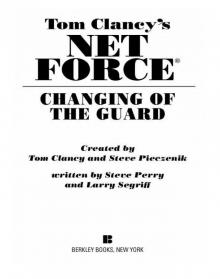 Changing of the Guard
Changing of the Guard Clear and Present Danger
Clear and Present Danger Hounds of Rome
Hounds of Rome Breaking Point
Breaking Point Tom Clancy's Jack Ryan Books 7-12
Tom Clancy's Jack Ryan Books 7-12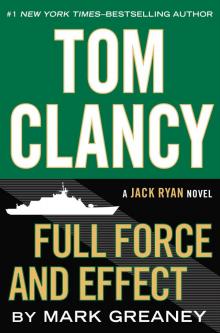 Full Force and Effect
Full Force and Effect The Archimedes Effect
The Archimedes Effect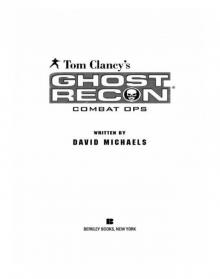 Combat Ops
Combat Ops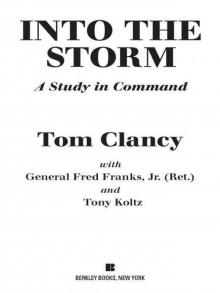 Into the Storm: On the Ground in Iraq
Into the Storm: On the Ground in Iraq Under Fire
Under Fire Point of Impact
Point of Impact Red Rabbit
Red Rabbit Rainbow Six
Rainbow Six The Hunt for Red October
The Hunt for Red October The Teeth of the Tiger
The Teeth of the Tiger Conviction (2009)
Conviction (2009) Battle Ready
Battle Ready Patriot Games
Patriot Games The Sum of All Fears
The Sum of All Fears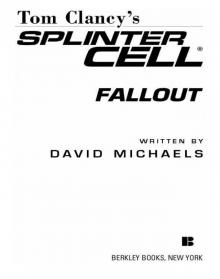 Fallout (2007)
Fallout (2007) Red Storm Rising
Red Storm Rising The Cardinal of the Kremlin
The Cardinal of the Kremlin Executive Orders
Executive Orders Lincoln, the unknown
Lincoln, the unknown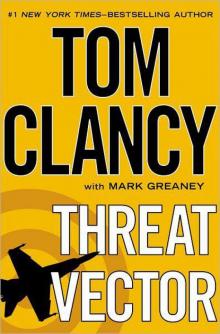 Threat Vector
Threat Vector The Hunted
The Hunted Shadow Warriors: Inside the Special Forces
Shadow Warriors: Inside the Special Forces End Game
End Game Special Forces: A Guided Tour of U.S. Army Special Forces
Special Forces: A Guided Tour of U.S. Army Special Forces Locked On
Locked On Line of Sight
Line of Sight Tom Clancy Enemy Contact - Mike Maden
Tom Clancy Enemy Contact - Mike Maden Fighter Wing: A Guided Tour of an Air Force Combat Wing
Fighter Wing: A Guided Tour of an Air Force Combat Wing Springboard
Springboard Line of Sight - Mike Maden
Line of Sight - Mike Maden EndWar
EndWar Dead or Alive
Dead or Alive Tom Clancy Support and Defend
Tom Clancy Support and Defend Checkmate
Checkmate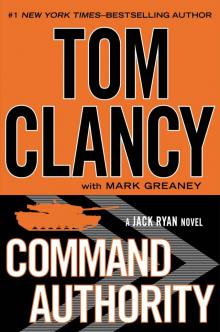 Command Authority
Command Authority Carrier: A Guided Tour of an Aircraft Carrier
Carrier: A Guided Tour of an Aircraft Carrier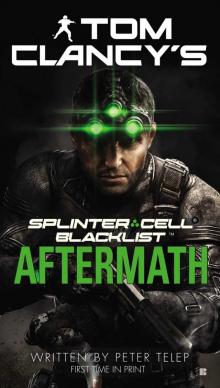 Blacklist Aftermath
Blacklist Aftermath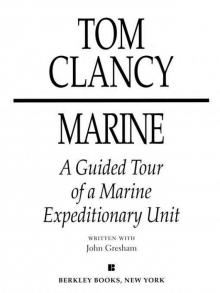 Marine: A Guided Tour of a Marine Expeditionary Unit
Marine: A Guided Tour of a Marine Expeditionary Unit Commander-In-Chief
Commander-In-Chief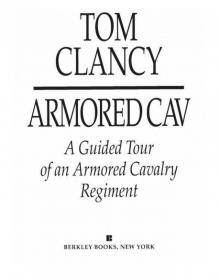 Armored Cav: A Guided Tour of an Armored Cavalry Regiment
Armored Cav: A Guided Tour of an Armored Cavalry Regiment Tom Clancy's Jack Ryan Books 1-6
Tom Clancy's Jack Ryan Books 1-6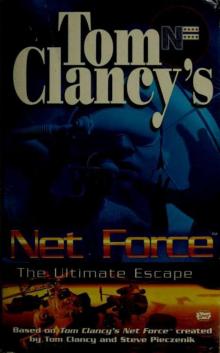 The Ultimate Escape
The Ultimate Escape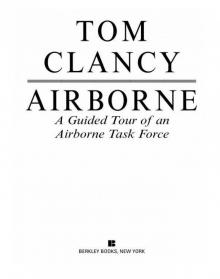 Airborne: A Guided Tour of an Airborne Task Force
Airborne: A Guided Tour of an Airborne Task Force Debt of Honor
Debt of Honor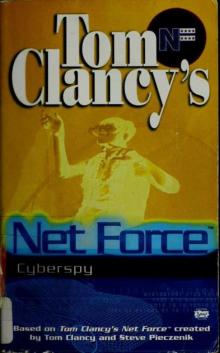 Cyberspy
Cyberspy Point of Contact
Point of Contact Operation Barracuda (2005)
Operation Barracuda (2005)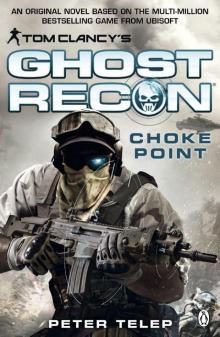 Choke Point
Choke Point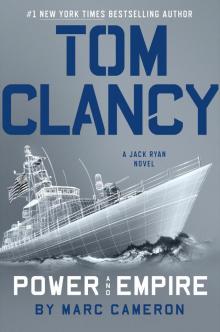 Power and Empire
Power and Empire Every Man a Tiger: The Gulf War Air Campaign
Every Man a Tiger: The Gulf War Air Campaign Endgame (1998)
Endgame (1998) EndWar: The Missing
EndWar: The Missing Splinter Cell (2004)
Splinter Cell (2004) The Great Race
The Great Race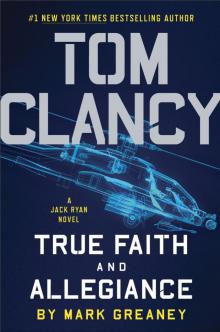 True Faith and Allegiance
True Faith and Allegiance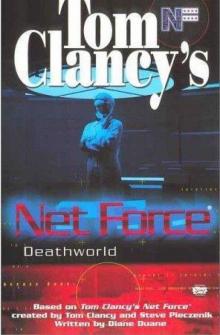 Deathworld
Deathworld Ghost Recon (2008)
Ghost Recon (2008)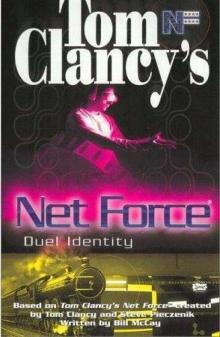 Duel Identity
Duel Identity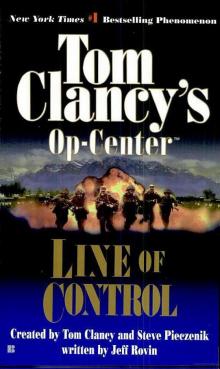 Line of Control o-8
Line of Control o-8 The Hunt for Red October jr-3
The Hunt for Red October jr-3 Hidden Agendas nf-2
Hidden Agendas nf-2 Acts of War oc-4
Acts of War oc-4 Ruthless.Com pp-2
Ruthless.Com pp-2 Night Moves
Night Moves The Hounds of Rome - Mystery of a Fugitive Priest
The Hounds of Rome - Mystery of a Fugitive Priest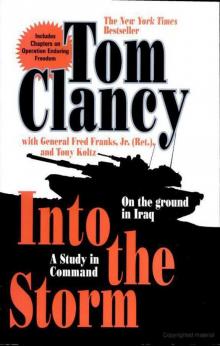 Into the Storm: On the Ground in Iraq sic-1
Into the Storm: On the Ground in Iraq sic-1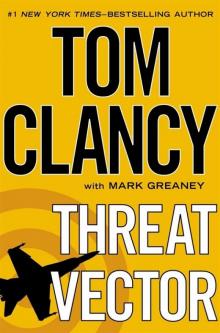 Threat Vector jrj-4
Threat Vector jrj-4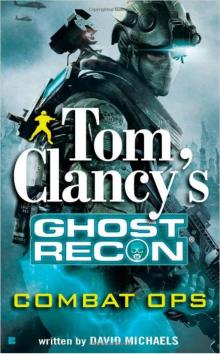 Combat Ops gr-2
Combat Ops gr-2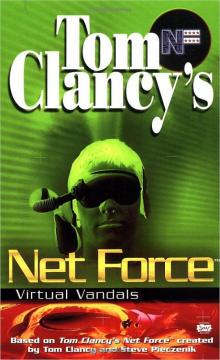 Virtual Vandals nfe-1
Virtual Vandals nfe-1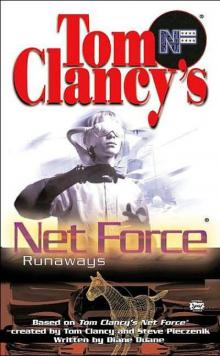 Runaways nfe-16
Runaways nfe-16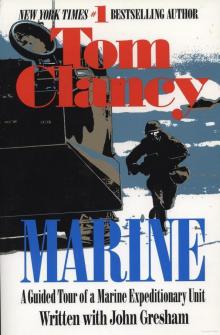 Marine: A Guided Tour of a Marine Expeditionary Unit tcml-4
Marine: A Guided Tour of a Marine Expeditionary Unit tcml-4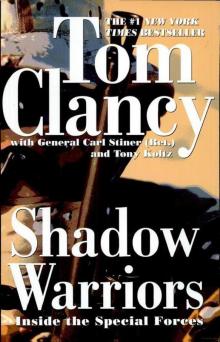 Shadow Warriors: Inside the Special Forces sic-3
Shadow Warriors: Inside the Special Forces sic-3 Jack Ryan Books 1-6
Jack Ryan Books 1-6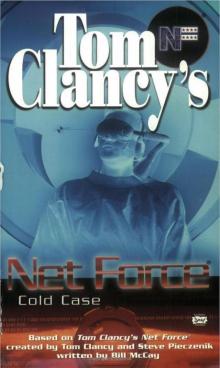 Cold Case nfe-15
Cold Case nfe-15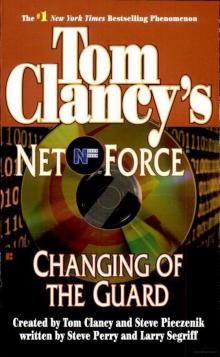 Changing of the Guard nf-8
Changing of the Guard nf-8 Splinter Cell sc-1
Splinter Cell sc-1 Battle Ready sic-4
Battle Ready sic-4 The Bear and the Dragon jrao-11
The Bear and the Dragon jrao-11 Fighter Wing: A Guided Tour of an Air Force Combat Wing tcml-3
Fighter Wing: A Guided Tour of an Air Force Combat Wing tcml-3 Patriot Games jr-1
Patriot Games jr-1 Jack Ryan Books 7-12
Jack Ryan Books 7-12 Mission of Honor o-9
Mission of Honor o-9 Private Lives nfe-9
Private Lives nfe-9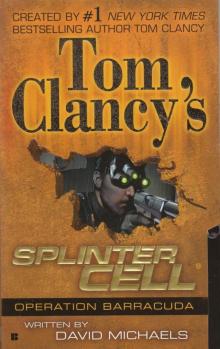 Operation Barracuda sc-2
Operation Barracuda sc-2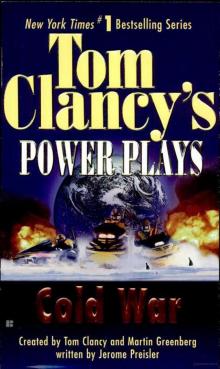 Cold War pp-5
Cold War pp-5 Point of Impact nf-5
Point of Impact nf-5 Red Rabbit jr-9
Red Rabbit jr-9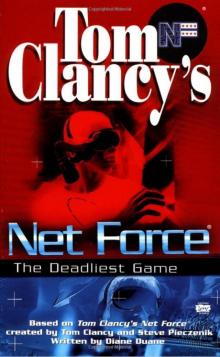 The Deadliest Game nfe-2
The Deadliest Game nfe-2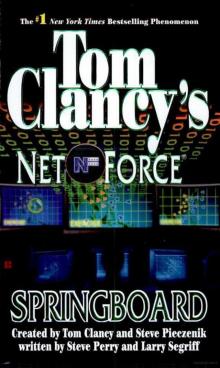 Springboard nf-9
Springboard nf-9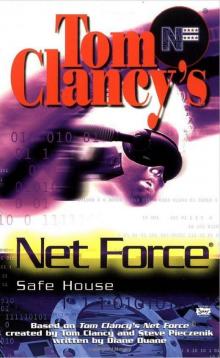 Safe House nfe-10
Safe House nfe-10 EndWar e-1
EndWar e-1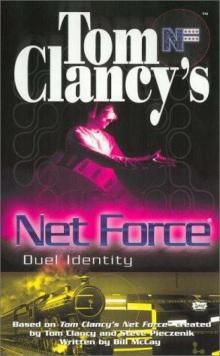 Duel Identity nfe-12
Duel Identity nfe-12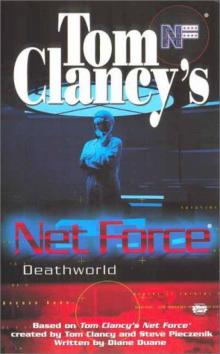 Deathworld nfe-13
Deathworld nfe-13 Politika pp-1
Politika pp-1 Rainbow Six jr-9
Rainbow Six jr-9 Tom Clancy's Power Plays 1 - 4
Tom Clancy's Power Plays 1 - 4 Endgame sc-6
Endgame sc-6 Executive Orders jr-7
Executive Orders jr-7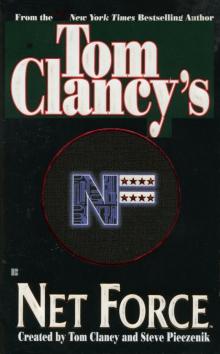 Net Force nf-1
Net Force nf-1 Call to Treason o-11
Call to Treason o-11 Locked On jrj-3
Locked On jrj-3 Against All Enemies
Against All Enemies The Sum of All Fears jr-7
The Sum of All Fears jr-7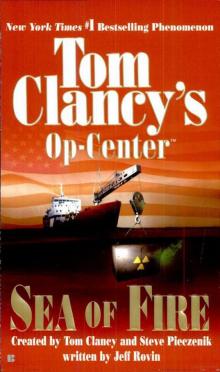 Sea of Fire o-10
Sea of Fire o-10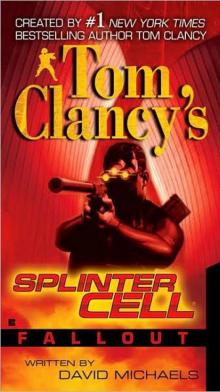 Fallout sc-4
Fallout sc-4 Balance of Power o-5
Balance of Power o-5 Shadow Watch pp-3
Shadow Watch pp-3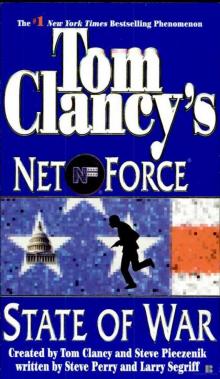 State of War nf-7
State of War nf-7 Wild Card pp-8
Wild Card pp-8 Games of State o-3
Games of State o-3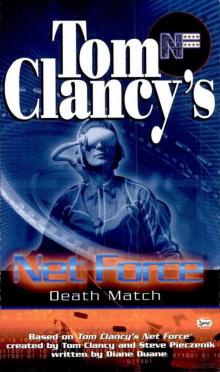 Death Match nfe-18
Death Match nfe-18 Against All Enemies mm-1
Against All Enemies mm-1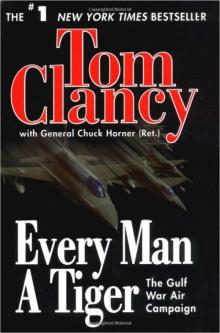 Every Man a Tiger: The Gulf War Air Campaign sic-2
Every Man a Tiger: The Gulf War Air Campaign sic-2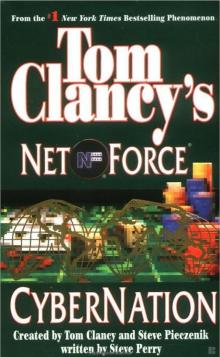 Cybernation nf-6
Cybernation nf-6 Support and Defend
Support and Defend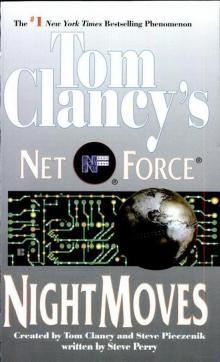 Night Moves nf-3
Night Moves nf-3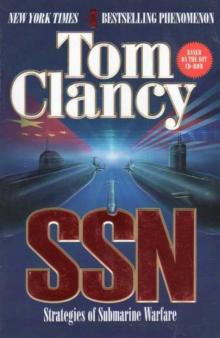 SSN
SSN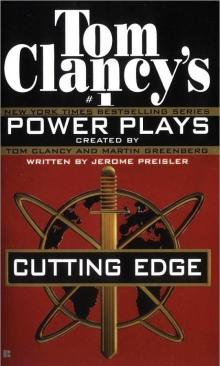 Cutting Edge pp-6
Cutting Edge pp-6 The Cardinal of the Kremlin jrao-5
The Cardinal of the Kremlin jrao-5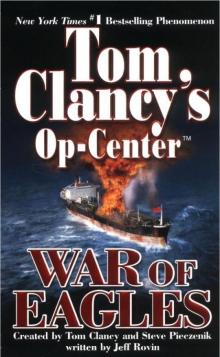 War of Eagles o-12
War of Eagles o-12 Op-Center o-1
Op-Center o-1 Mirror Image o-2
Mirror Image o-2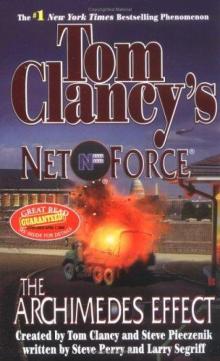 The Archimedes Effect nf-10
The Archimedes Effect nf-10 Teeth of the Tiger jrj-1
Teeth of the Tiger jrj-1 Bio-Strike pp-4
Bio-Strike pp-4 State of Siege o-6
State of Siege o-6 Debt of Honor jr-6
Debt of Honor jr-6 Zero Hour pp-7
Zero Hour pp-7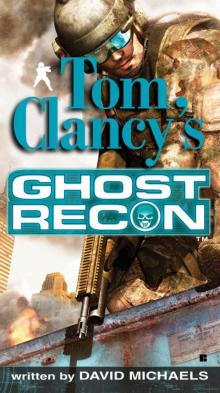 Ghost Recon gr-1
Ghost Recon gr-1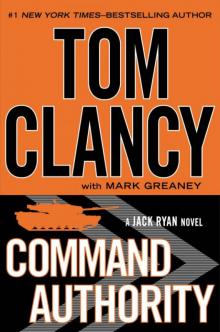 Command Authority jr-10
Command Authority jr-10 Tom Clancy's Power Plays 5 - 8
Tom Clancy's Power Plays 5 - 8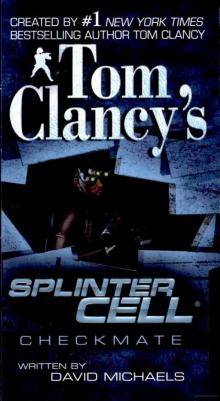 Checkmate sc-3
Checkmate sc-3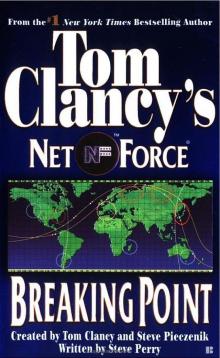 Breaking Point nf-4
Breaking Point nf-4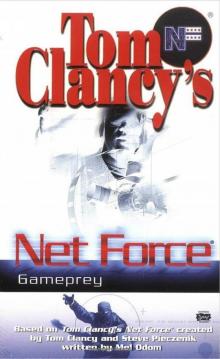 Gameprey nfe-11
Gameprey nfe-11 The Hunted e-2
The Hunted e-2 Hidden Agendas
Hidden Agendas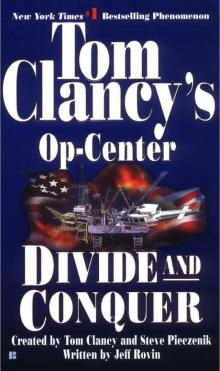 Divide and Conquer o-7
Divide and Conquer o-7